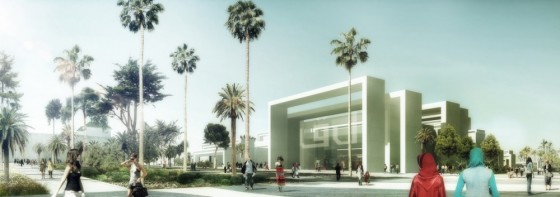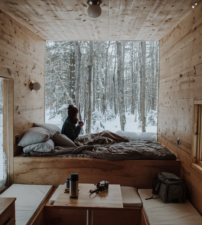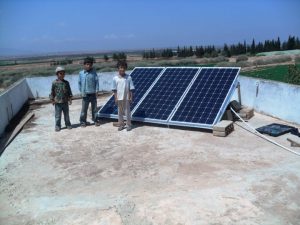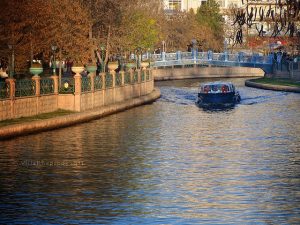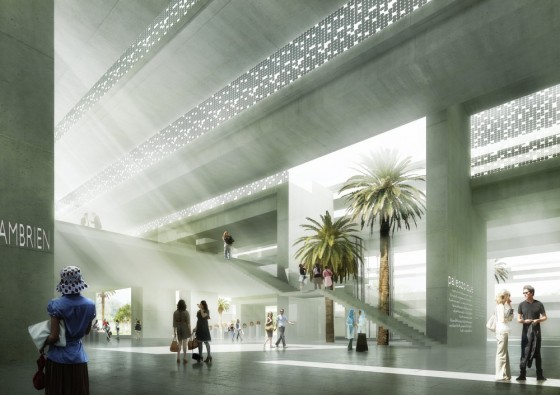 The Archaeological Museum of Rabat was first built in 1932 and is badly in need of a renovation, so Archi5 submitted plans for a new solar-powered facility that would rise in harmony with its surrounding. Comprised of a series of boxy ribbons filled in with glazing, the conceptual museum is a fluid space that provides “visual environmental comfort,” according to the design brief, as well as a protective shell for the museum’s numerous archaeological and earth science treasures.
The Archaeological Museum of Rabat was first built in 1932 and is badly in need of a renovation, so Archi5 submitted plans for a new solar-powered facility that would rise in harmony with its surrounding. Comprised of a series of boxy ribbons filled in with glazing, the conceptual museum is a fluid space that provides “visual environmental comfort,” according to the design brief, as well as a protective shell for the museum’s numerous archaeological and earth science treasures.
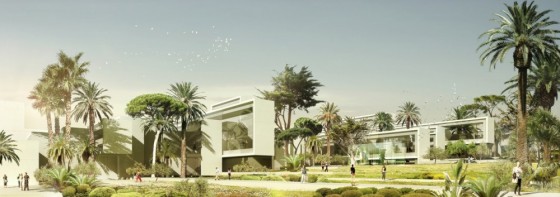 In keeping with Morocco’s ambitions to amp up the nation’s solar energy production, Archi5 submitted a brief for a renewably-powered museum to the Moroccan Minister of Culture in 2010.
In keeping with Morocco’s ambitions to amp up the nation’s solar energy production, Archi5 submitted a brief for a renewably-powered museum to the Moroccan Minister of Culture in 2010.
The 24, 730 sqm facility would incorporate rooftop photovoltaic cells that would not only generate energy but also a create lovely shadow play inside the various buildings. These are well lit thanks to tall glazed windows, although careful design mitigates the potential greenhouse effect during Rabat’s merciless summer months.
There are three main gardens around which the architecture is arranged (instead of the other way around), while the absence of monolithic volumes softens the transition between vegetation and the built environment. That being said, this design requires a great deal of horizontal expansion for a relatively dense urban environment.
Possessing a valuable collection of treasures found in well-known sites historical such as Volubilis, the archaeology museum is important to Morocco and could use an upgrade. Archi5 proposed a subtle and gentle design that even harvests and recycles rainwater to lessen the environmental impact of such a renovation.
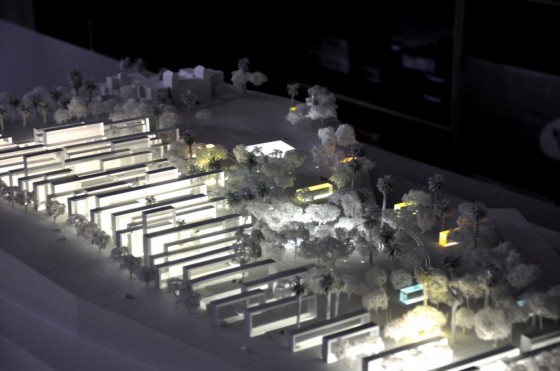 “This museum is in a quite interesting purpose built 1930s Art Deco building that has been allowed to deteriorate,” a Canadian living in Qatar wrote on Trip Advisor.
“This museum is in a quite interesting purpose built 1930s Art Deco building that has been allowed to deteriorate,” a Canadian living in Qatar wrote on Trip Advisor.
“It is disappointing in that it is really only three rooms of out dated displays and takes about 15 minutes to visit. Some of the artifacts are quite interesting like the Roman bronzes but then there are really only a handful of examples. This museum desperately needs a renovation and expansion.”
Unlike the Rabat zoo, which was recently upgraded and is now home to “gladiator” lions thought to be extinct, this museum seems fated to retain its current size and appearance. At least for now.

